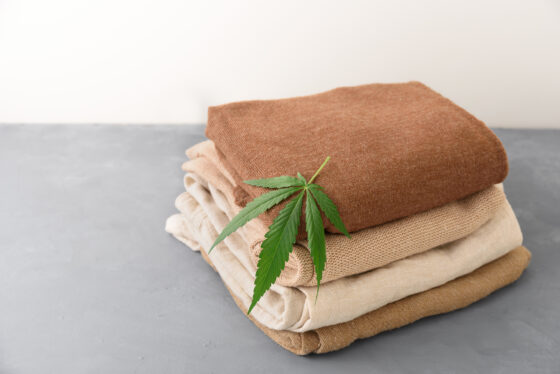
A thousand miles from the technologies used to develop more sustainable materials, a textile fiber known for centuries, hemp, is gradually making its way back into our wardrobes. The fashion industry is increasingly interested in its strong environmental potential and its countless virtues.
Even before turning to lab leather or mushroom and lionfish faux leathers, eco-responsible alternatives in the making, some fashion players prefer traditional know-how, and even more local cultures. After signing the return of linen, a natural ecological ancestral material, brands and designers turn to hemp, a fiber that was stigmatized and then forgotten in favor of cotton – and other synthetic materials – despite its many benefits for both the skin and the environment.
Durable and resistant
After decades of absence, relegated to the rank of an old-fashioned fiber, hemp finally seems capable of taking revenge, just like its distant cousin, linen. Used in transportation, construction and even the thermal renovation of the building, hemp boasts a large number of properties making it an essential fiber for fashion today, which can even position itself as the one that will enable an entire industry to reduce its heavy impact on the planet.
Hemp has been used for centuries by the textile industry and is an important natural sustainable alternative, partly because of its low water and chemical requirements. According to the LCB (Lin et Chanvre Bio) association, it is “is not very susceptible to diseases and insects (…) and does not need weeds”and can brag about resistant to drought, while showing rapid growth. In other words, hemp needs no pesticides, is not greedy in water and develops at great speed. It’s hard to do better, and yet… The fibers are also considered extremely resistant, hemp clothing can last through the years without incident.
The fiber of the future
As heat waves around the world become more frequent, hemp is proving to be an important ally in dealing with extreme temperatures. It is a thermoregulatory fiber that keeps you warm in winter and cool in summer. A virtue to which is added its ability to absorb moisture quickly, limit perspiration and odors, and its antibacterial and antifungal properties. Today, this natural material seems essential to meet the environmental challenges that characterize the daily lives of fashion players.
(ETX Daily Up)